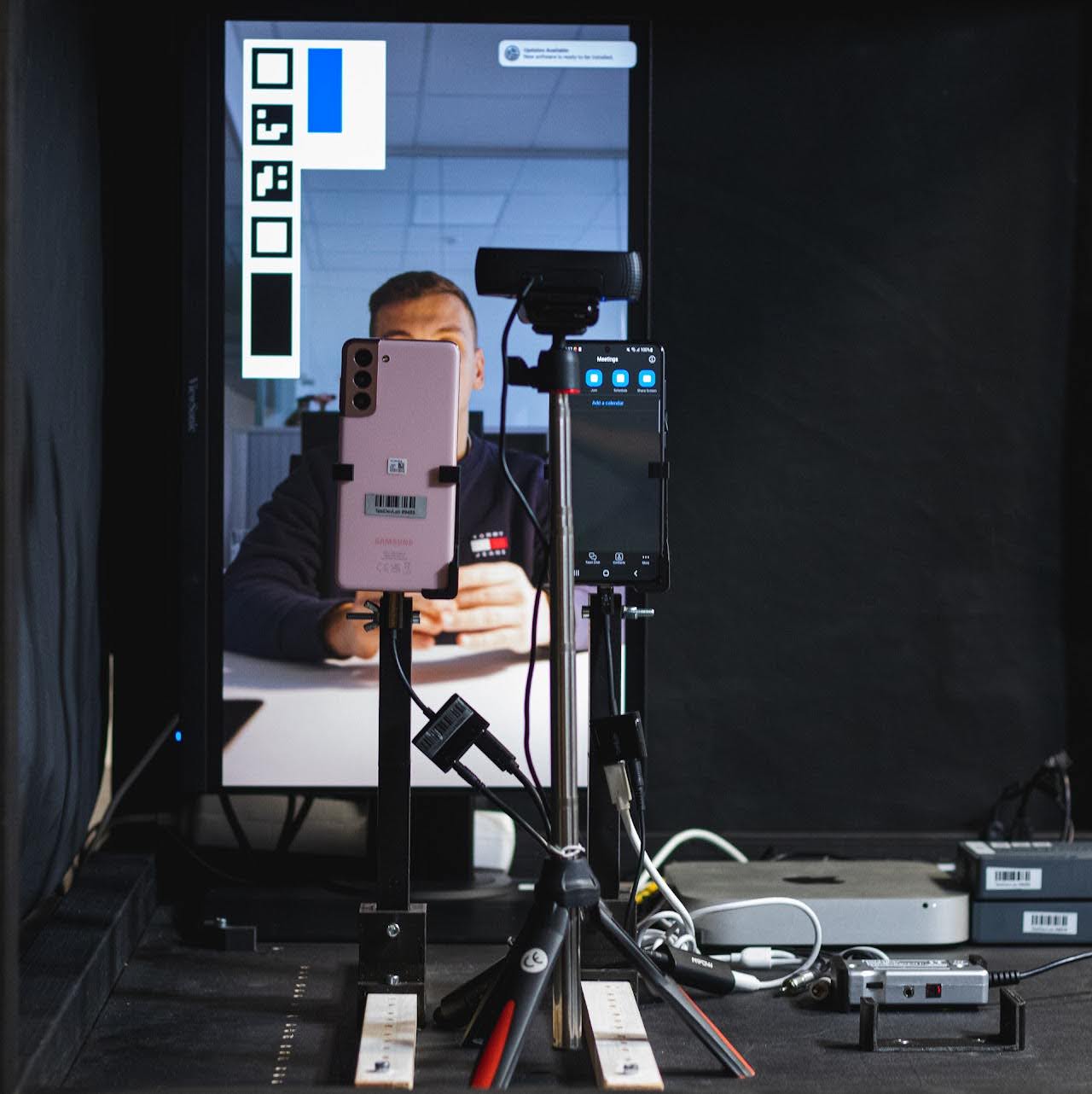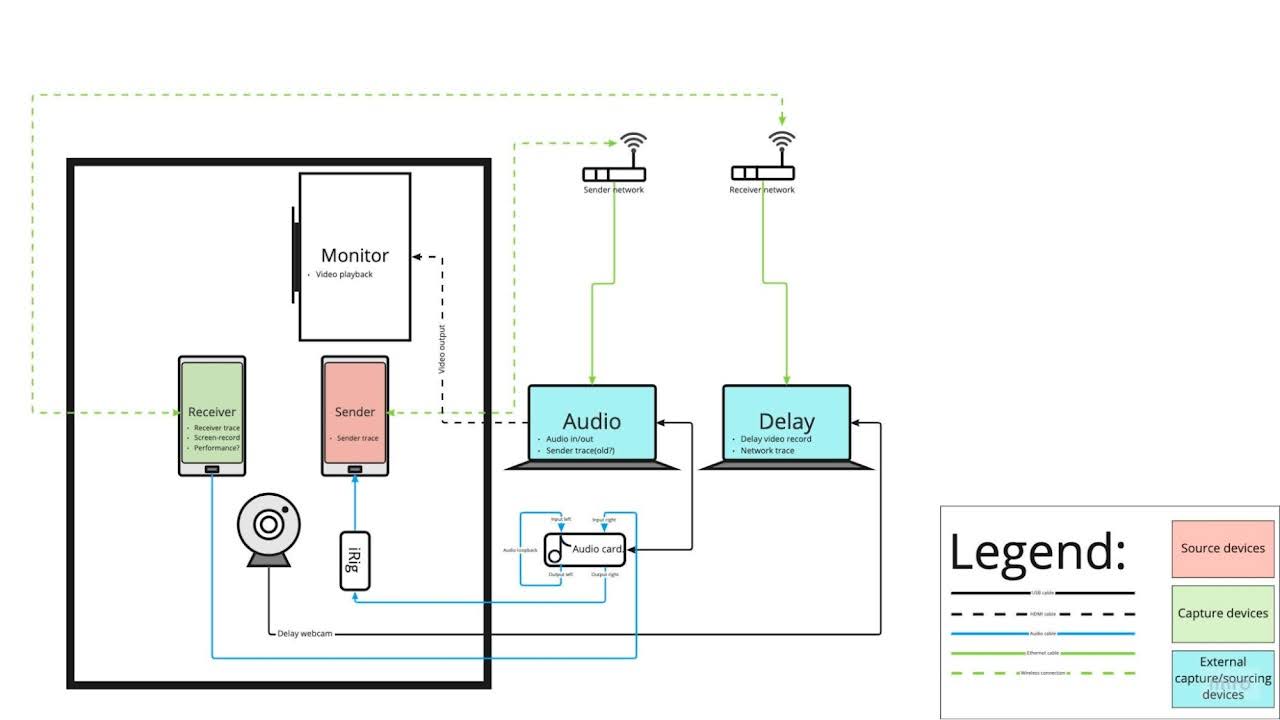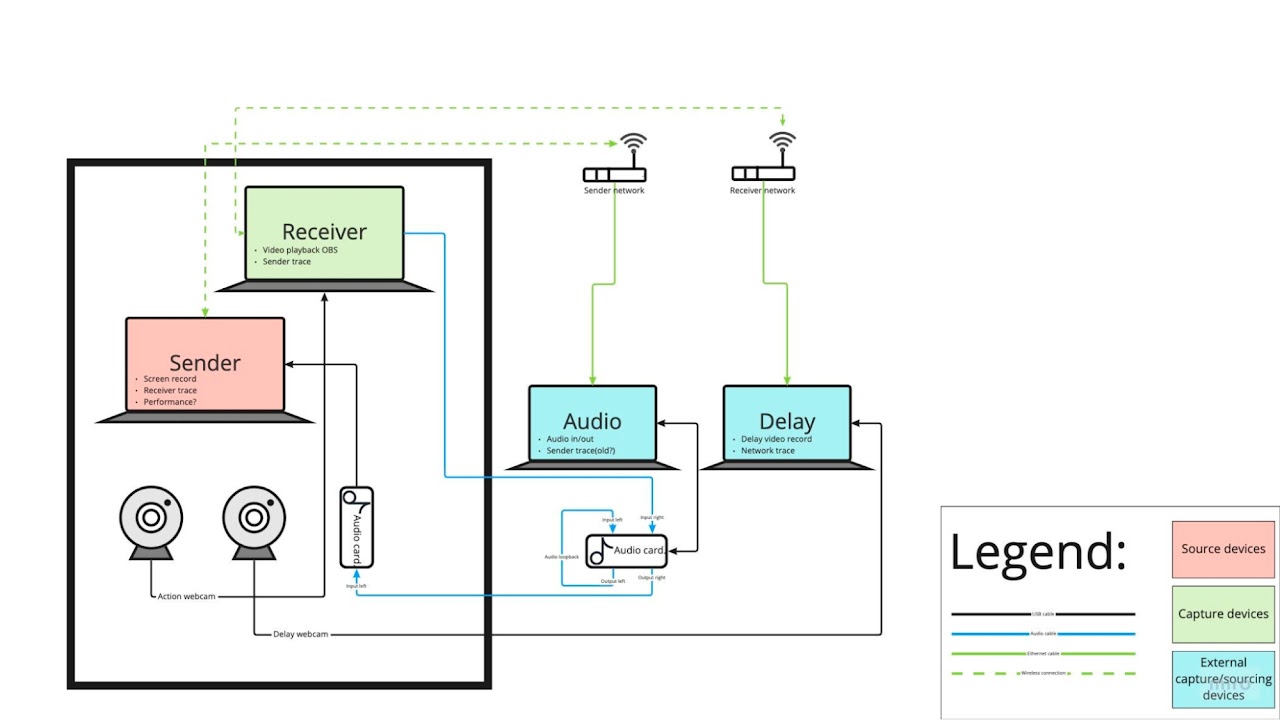The Anatomy of an A/V Testing Setup
Our primary tool is the black box, a physical enclosure that eliminates external light interference for accurate video quality evaluation. The setup varies depending on whether we are testing mobile or desktop applications.

Mobile Setup
- Sender monitor: Used for video playback to ensure consistent media.
- Sender computer / Audio computer: Runs scripts for network capture and audio recording, and initiates video playback.
- Receiver computer / Video delay computer: Manages video recording with an external camera and receiver network capture.
- Audio card: Connects sender and receiver devices to computers to capture original and received audio.
- iRig: A tool to stream and regulate sender audio.
- External camera: Used to capture video delay, showing both the sender and receiver devices at once.
- Network access points: Provides a limited network to the devices under test, allowing for specific network conditions to be applied.
- Sender and receiver devices: The devices used to make the call and send/receive media.

Desktop Setup
- Sender computer: Operates as the call sender and handles network capturing.
- Receiver computer: Acts as the call receiver, manages screen recording, and captures receiver network traces.
- Audio computer: Ensures audio input/output and starts the capturing process.
- Delay computer: Records video delay material with an external camera, showing both the sender and receiver.
- Audio card: Connects devices to computers to capture audio input and output.
- iRig: A tool for streaming and regulating sender audio.
- External cameras: One for capturing video delay, and another to film the action for the receiver device.
- Network access points: Provides a limited network to the devices under test.
